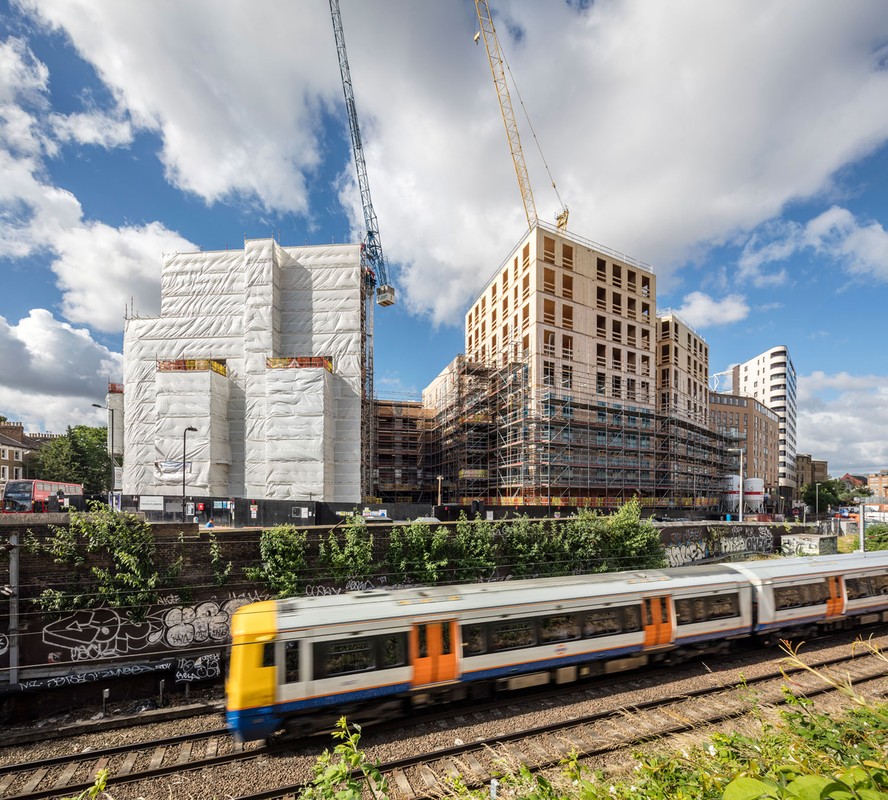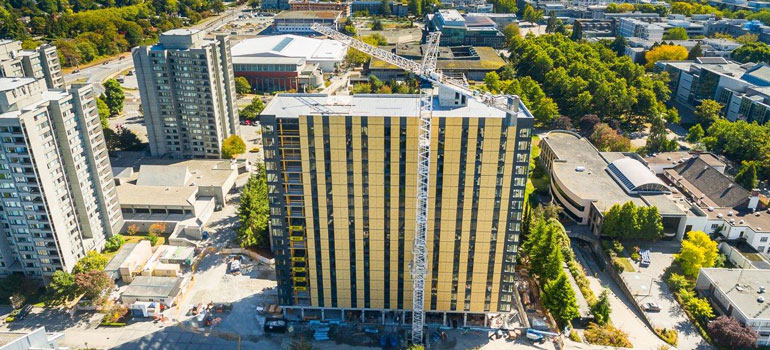Skyscrapers Made of Wood
In an age where we all have computers in our pockets and the latest technology moves at lightning speed, it’s good to remember that Mother Nature continues to provide new and sustainable ways for us to live.
Take, for instance, the perfection of a single tree.
One mature tree offers beauty, shade and can absorb up to 48 pounds of carbon dioxide each year. A tall tree also provides the daily oxygen supply for a family of four. Trees are a renewable source of energy that provides materials for thousands of products we use every day.
And now they can even be used for eco-friendly skyscrapers.
Not Your Granddaddy’s Cabin

“Dalston Lane is the world’s largest CLT building, and a landmark project in our ambition to roll out the use of timber construction in high-density urban housing, across London and beyond.” -Waugh Thistleton Architects
Of course, wood has been used for ages to provide shelter from the elements. From the humble log cabin to more refined mansions, timber — especially tall, straight-grained native varieties — has always been a go-to material.
Until recently, though, there’s been a limit to just how high in the sky a builder could get with wood. Contractors and ambitious architects turned to steel and concrete to build their tallest buildings, but these materials come at a steep environmental cost. For example, the University of Northern British Columbia estimates that they kept 400 tons of CO2 out of the atmosphere by choosing wood instead of other energy-intensive structural materials. This is in addition to the CO2 that the wood itself has locked up over the years of its growth — the trees perform a noble service as they grow. In fact, some researchers estimate that switching to engineered wood for even the tallest buildings could save 14 to 31 percent of global CO2 emissions.
That’s a big deal, y’all.
The Race to the Top
We should take a moment to explain that towering skyscrapers aren’t framed with the same 2x4s you’ll find down at your local lumber yard. Instead, timber is precision-cut and cross-laminated or nail-laminated to make super-strong, fire-resistant beams. Think of the process as souping up a car’s engine for optimal performance. This strength allows buildings to climb higher than ever before. They’re also breathtakingly beautiful, adding the warm glow of real wood to skylines and echoing the beauty of a real tree towering over the landscape. No wonder engineers and architects are falling in love with wood skyscrapers, and the race to erect more around the world is officially on.
Made in the USA
Our favorite part of this story? American lumber, including Southern Yellow Pine, is poised to be a part of this new trend. And because trees are a 100% renewable resource, we can replant every tree that is harvested to ensure that our forests are never depleted. To find real wood in your town, just look up. It’ll be there touching the clouds some day.
(Images via Gray Organschi Architects, MGA, via Waugh Thistleton Architects, via University of British Columbia)







